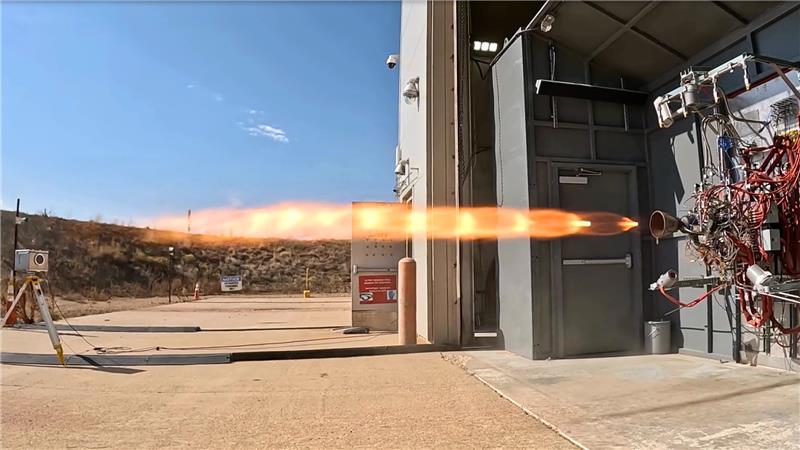Well, we told you that everyone was into making things go fast these days. Yesterday, as first reported by Axios, propulsion company Ursa Major announced that they’ve landed a $34.9M contract to sell their signature Draper engines to “an undisclosed U.S. aerospace and defense company.” Coy.
The company seems to see the contract as a proof of concept for Draper and a way to hone the technology even further. “The effort will accelerate development, production, and deployment of Draper for critical national security applications in space and ultimately validate the engine’s performance and flexibility under operational conditions,” the company said in a statement.
Seems those ads in the DC Metro did the trick.
Go boom: For the unfamiliar, Ursa Major was founded back in 2015 in Colorado and specializes in making engines and propulsion systems that make things go, like, really fast. Their engines are used in everything from space launch to hypersonics and missile defense.
Their engines come in a few different flavors:
- Hadley: A LOX (liquid oxygen) and kerosene (RP-1) engine designed for small launchers, hypersonics, and the like.
- Ripley: A more powerful LOX and kerosene engine for medium-payload launch vehicles.
- Arroway: A heavy-lift LOX and methane engine still in development.
- Draper: A version of Hadley using storable liquid hydrogen peroxide and kerosene fuel, useful for hypersonic and defense applications.
Draper was unveiled in the spring of 2023 and has been in development ever since. The engine “is currently under rapid development with the Air Force Research Lab and is on track for its first flight as part of the $28.6M AFRL contract by end of year,” according to Chris Spagnoletti, President of Liquid Systems at Ursa Major.
Spagnoletti described Draper as a “storable, tactical derivative of our Hadley engine” that is “an ideal fit for high-speed, affordable mass munitions and targets.” It’s also already flown at hypersonic speeds “on several occasions,” he added.
Drink up: So, what’s so great about an engine like Draper? According to Spagnoletti, it’s one of a kind. “It has the rapid response capabilities and storability of a solid rocket motor, with the flexibility (throttleable, restartable) of a traditional liquid engine—all while able to operate in the vacuum of space, unlike air-breathing propulsion systems,” he said.
A bit more about Draper’s specs:
- The engine has about 4,000lbs of thrust with a less than 13-inch diameter.
- Spagnoletti described it as a “truly a multi-domain, modular propulsion system” that is “safe and storable for air, land, sea, or space.”
- The engine boasts a low part count, and two-thirds of it is made up of additively manufactured parts. The idea is to make an engine that is cheap and scalable, without compromising on power.
- It can also replace existing propulsion systems on munitions that need more speed or range, according to the company.
This specific contract (the company declined to disclose further details, so we’re keeping it vague) will help “accelerate the deployment of Draper in space, while we simultaneously prepare for our first Draper flight later this year,” Spagnoletti said.
We’d be remiss if we didn’t mention how very popular Ursa Major has been with investors. According to Pitchbook data, the company has raised over $394M in the past ten years. Most recently, in December 2024, the team closed a $120M Series E at a $949M post-valuation. Ever so close to unicorn status.
The company is backed by some of the biggest funds in the game—including Explorer 1, Eclipse, RTX Ventures, Brave Capital, and RTX Ventures—and is part of Palantir’s Warp Speed program. Always good to have friends in high places.

